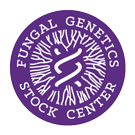Strain: Neurospora crassa
FGSC #4680
Reporting Genes: arg-2;eas
Species: crassa
Allele: CD80;UCLA191
Alternate Strain Number: MLS 82-9
Depositor: MLS
Linkage Group: IVR;IIR
Mating Type: a
Opposite Mating Type: 4679
ref1: NN 32:12-13, https://doi.org/10.4148/1941-4765.1570
Genes
